Plaza España
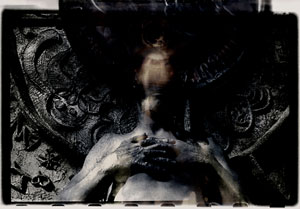
1998

1998
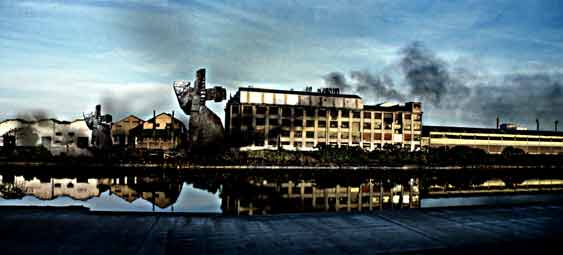
2004
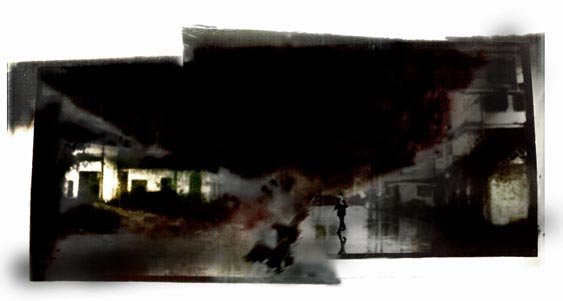
2001

2001

2001

2001
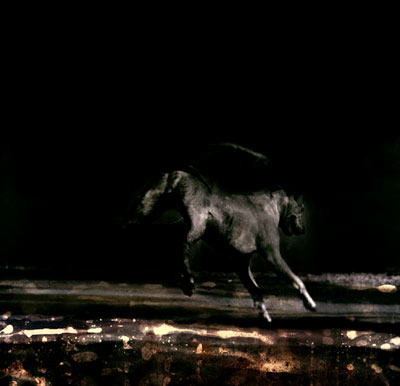
1999
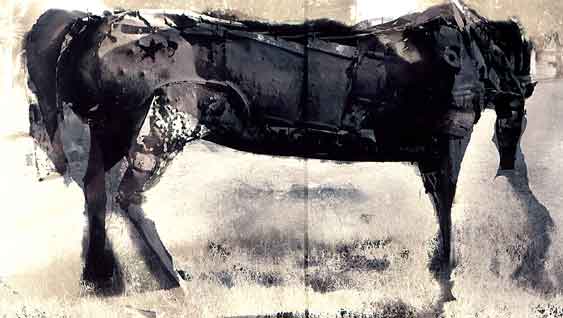
1999

2001

1998

2003

2002

2003

2003

2003

2003
Louis Daguerre is known as the forerunner of photography; however, the fact that his link to the images is prior to the art that made him famous sometimes passes unnoticed. In a Parisian square, Daguerre made his living by running a theatre with a scene animated by movements and play of lights and shadows. The device, namely diorama, was an animated picture that conveyed a powerful impression. The spectators would see not only the representation of a scene but reality itself.
Through visual artifice, the images made the audience feel they were looking at "nature" not just its representation. That is why the diorama was also known by the suggestive name "the room of miracles". Perhaps, Daguerre´s relation to this kind of art has foreshadowed his way of conceiving photography. He used to say that "the daguerrotype is not a mere instrument used to draw nature but it gives nature power to reproduce itself".
Daguerre encouraged the phantasmal desire to reproduce nature by technical means. With the invention of the "daguerrotype" such representation acquired certain technical probability and an almost scientific certainty; however, it also possesses the quality of referring to a mythical rather than a scientific world, which shall offer a novel dimension.
Roland Barthes sees in the old work of Daguerre an antecedent that triggers a significant link: photography, Barthes says, is a form of art due to the influence of the theatre and not of the painting, as it is usually suggested.
Nevertheless, if it is in fact essentially an "art of the scene", it is due to a specific mediator: death.
"As hard as we may try to make a picture more vivid, pictures are like primitive theatres, like living paintings; they are motionless representations through which we see the dead". Barthes confirms. In accepting this statement as true, we are also admitting that every photograph presents a paradox: the tension between the reproduction, i.e: the more or less probable record of what has been photographed, and the representation, which allows us to see a fixed, motionless frozen scene; the presence of what already happened. Such residual presence (be it a subject or an objet) that seems to deny the course of time, leads to a disturbing confusion: it makes us believe that in the truth of photography we see the reality it shows.
Many analists of the representative nature of photography had long believed that speaking of the truth of photography was the same as speaking of its objectivity, which is not completely certain. In fact, Walter Benjamin had already pointed out that the emanation of reality impregnates the copy. He once stated: "it is the tiny sparkle of the here and now with which chance has singed its image character". Furthermore, there is no thuth or lie in the copy, there is only a certainty: What we see has happened (Barthes). This is true due to the image strength that suggests that something happened, rather than due to the image being the result of a testimonial or documental intention. Therefore, there is something terrible about pictures: the return of what once occurred and sometimes the return of things that no longer exist.
I believe that Aveta's work has something of that lost paradox that Louis Daguerre encouraged, that aporia which, with the passing of the years, has led to a conception of photography that plays with the tension between the record and the representation, in the limit of experience between the reproduction of reality and the invention of a scene. Such paradox can only exist in a photographic image, in a space where the gestion about the reality of the image arises due to the likelihood of what has been represented.
Aveta´s theatre is characterized by a dense scene and an over elaborated style, represented by unknown but partially recognizable beings (slogans, figures, places and so forth can be identified); however,beyond variety and diversity, there is a family likeness, an expression, a determination that unifies them: they are all subjet to a rigorous law of distortion. Those images reflect a space decomposing and recomposing at the same time. They come, on the one hand, from a decomposition that has altered each and every one of the elements that makes up the representation, that has added a colourless style and a dilution of their profiles, and on the other hand, from a recomposition by which each figure reappears in a superposed, interwined and contaminated way. In said scene, the layers of objets, silhouettes and figures refer to a juxtaposition of time, to the impossible conjunction of the different ages of each element.
Therefore, Aveta´s theatre is somehow execrable: it is all about the representation of memory in fragments, the representation of frozen and petrified recollection that invades the pictures with traces of something that once existed.
With the persistence of the past, to which every effigy testifies in its own way, the time seems to be flooded between the present time of the picture and the obscure age of the faces, bodies, leyends and the objects that appear as traces and remains of the memory.
Some years ago, I read a comment on Aveta´s pictures and it was about the link of his work to memory: "the treatment of the photographic device does not seem to be far too different from the subtle mechanisms that govern the memory. Like superposed recollections, the setup of images outlines an ambiguous universe of presence that interwine."
Although this comparison may be enlightening, I believe that Aveta´s pictures are not entirely based on bifurcations and flight of memory. Actually, they set a morphology for the memory and link it around certain figures, prints or spectrum.
In trying to describe the effect that some pictures provoked in him, Roland Barthes found a revelation that discurbed him: the persistence of a body already vanished in a photograph is not too different from a presence, more precisely, from a way of appearing in a ghosthy manner. That is the reason why the referent of photography reminds us of the physiognomy of the spectrum; the lineage of a photographed body seems to become illustrious forever in the etimology of the term spectrum, "since, through its latin root, this word has a link to the show and adds a terrible tone present in every picture: the return of what is dead". Barthes concludes.
Aveta´s theatre offers a show of diffuse, discontinuous and partial impressions, luminous shadows and a spectrum of experience, existence and stories. His images are full of question marks, not only due to what they show but most importantly due to what they hide. Perhaps, what is oustide the field is the basic principle that prompts the representation: it is about the tention, the breaking , the falling: the affliction and the smile, everything at the same time.
Juan Manuel Navarro
Hugo Aveta nace en Córdoba, Argentina en 1965.
Cursa estudios de Arte, Cine y Arquitectura en la Universidad Nacional de Córdoba.
A partir de 1987 comienza a interesarse por la fotografía , realiza diversos talleres en el país y asiste a innumerables conferencias y seminarios donde toma contacto con las personalidades más destacadas del arte y la fotografía a nivel nacional e internacional.
Desde 1992 comienza a exponer sus primeros trabajos.
2002. "Caída Libre". . Fotogalería del Teatro General San Martín. Buenos Aires. Argentina. Curador. Juan Travnik. Buenos Aires.
2001. Caída Libre. Galería Martorelli Gasser . Córdoba. Argentina.
2000.Caída Libre. Alianza Francesa. Festival de la Luz. Buenos Aires. Argentina
1998. La Escuela Oculta Fotogalería Municipal. Santa Fe. Argentina.
1887. Contrapunto. Galería del Teatro San Martín. Córdoba. Argentina.
1996. Fotogalería del Teatro General San Martín. Buenos Aires. Argentina. Curadora: Sara Facio.
1995. Casona Municipal Ensayo sobre los trabajadores de las salinas del norte de Córdoba.
1992. América tierra adentro Teatro Real. Córdoba. Argentina.
2003. Juannio 2003. Muestra subasta de fotografía latinoamericana. Museo Nacional de Arte Moderno Carlos Mérida. Caracas. Venezuela.
2003. Rítmos Primarios Foto instalación. Arte Ba. Córdoba. Argentina.
2002. Fotógrafos Cordobeses. XII Encuentro Argentino de fotografía. Centro Cultural Recoleta. Buenos Aires. Argentina. Curadores: Elda Harrington y Alejandro Montes de Oca.
2002. "Mirada Interior". Centro Cultural Recoleta. Buenos Aires. Argentina. Curadora: Teresa Anchorena.
2000. Nuevas Donaciones´´ Museo Nacional de Bellas Artes. Buenos Aires. Argentina.
2000. Argentina siglo xx en la visión de sus fotógrafos. Buenos Aires, Córdoba, Santa Fe, Neuquén, Mendoza. Argentina. muestra itinerante. Curadora: Pampa Risso Patrón.
2000. Muestra de curadores. Museo Castagnino. Rosario. Argentina.
2000. Caída Libre. II Bienal de arte del Mercosur. Porto Alegre. Brasil.
1999. Parte de cero. Centro Cultural España Córdoba. Córdoba. Argentina.
1998. Fotografía Argentina Actual: Los años 90. Guatemala. Muestra itinerante. Curadora: Sara Facio.
1998. El Cielo por Asalto. Para la multimedia Doble Atentado. Córdoba Argentina.
1996. El desnudo contemporaneo en la Argentina Museo Sívori. Buenos Aires. Argentina.
1996. La Jóven Generación.Museo Nacional de Bellas Artes. Buenos Aires. Argentina
1996. La mirada infantil.Centro Cultural Recoleta. Buenos Aires. Argentina.
1996 Curador y opositor de las muestras que representan a Córdoba en los
I, II y III Encuentros Latinoamericanos de Fotografía de la ciudad de La Plata. Argentina.
1993. Fotografos Cordobeses Muestra por selección. Teatro Real. Córdoba Argentina.